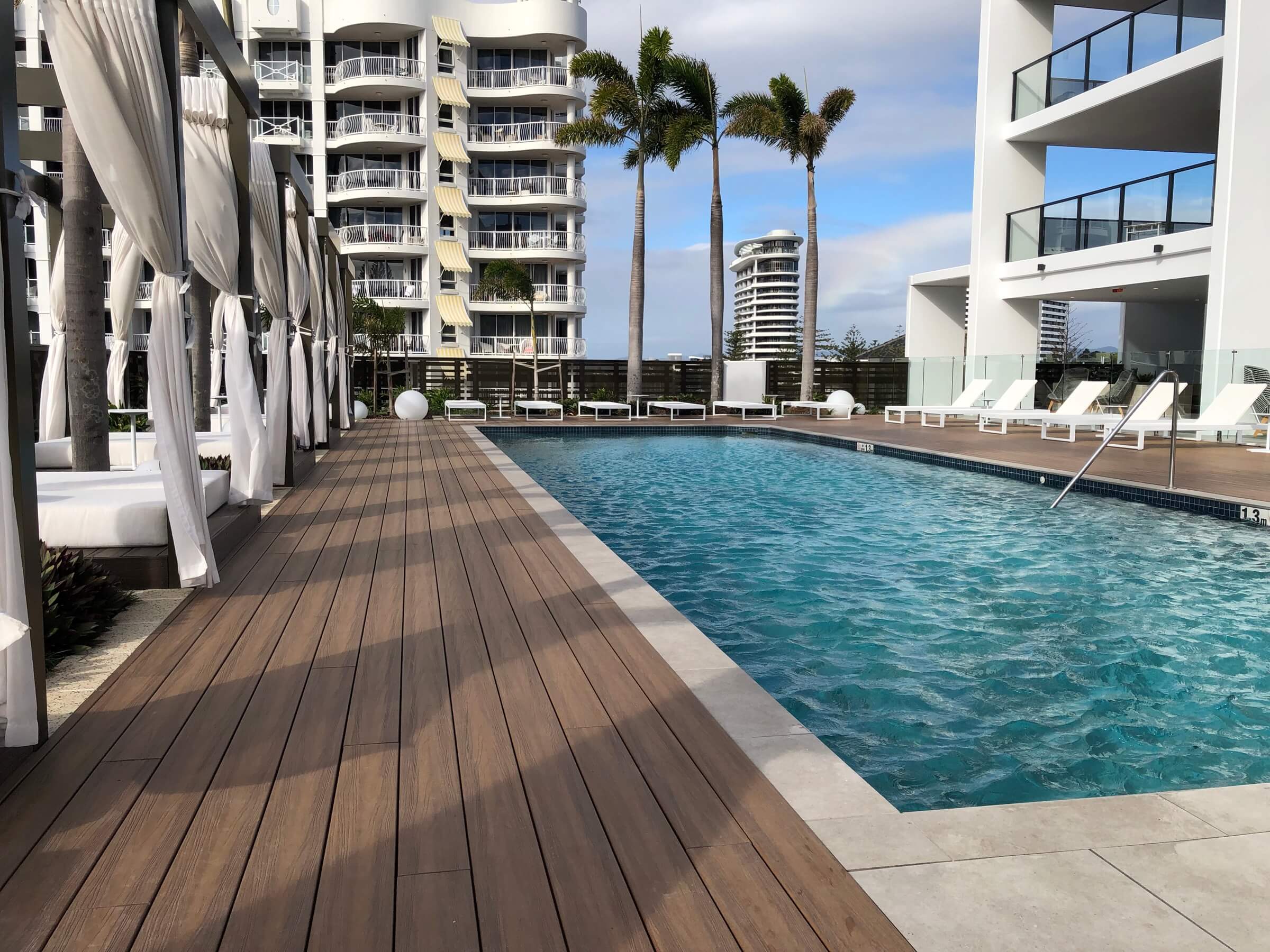In recent years, more people have made the switch from traditional wooden decking products to composite boards.
These products are made from a combination of recycled natural and synthetic ingredients that makes it durable, eco-friendly, and highly sustainable.
If you’re looking for an option that doesn’t require a lot of maintenance and can easily offset the cost in a few years, composite decking may just be the perfect choice for you.
In this article, we cover everything you need to know about composite decking and why it’s the top option on the market.
Everything You Need To Know About Composite Decking
Over the last ten years, more people have begun veering away from wood decking and started choosing composite decking as the perfect material for their backyard living space. While each material has its own share of pros and cons, composite decking continues to be a popular choice over traditional wood materials.
In this article, we will define composite decking and explore everything you need to consider before finalising your overall deck design.
What is Composite Decking?
Composite decking is a man-made product made from a combination of natural and synthetic materials. Typically, manufacturers produce composite boards by mixing wood fibre, plastic, and bonding agents.
There are two types of composite decking: uncapped wood composite and capped wood composite. Some uncapped wood composite are more susceptible to mould and mildew largely due to its exposed wood ingredients. In comparison, capped wood composite boards are sealed in a plastic shell, which increases its life span and protection.
How is Composite Decking Made?
All composite decking is made of a mixture of wood by-products— such as sawdust and wood chips—and recycled or virgin plastics. Most composite boards are made from recycled ingredients, which makes it an eco-friendly choice.
Composite boards are made using a process where its raw materials are combined and then melted to form a lumber shape in an extrusion process like making spaghetti. Some manufacturers also coat three sides of the board with a hard polypropylene or HDPE (High Density Polyethylene) shell to help protect the decking from fading over time.
Polypropylene is an ingredient commonly used in food packaging. It is known to provide great resistance to chemicals and fatigue.
Some new styles are a refined old version that does not have the capped cover and is deemed to be a harder surface. If the capped decking were to get damaged, you cannot repair it but with the uncapped you can sand and clean to repair it – be sure to ask Deck-Max about their version so you can better understand the difference.
How Much Does Composite Decking Cost
One primary drawback when choosing composite decking is its higher price tag. Composite decking costs between $80 to $250 + while natural wood costs $90 to $150 per square metre depending on the width and thickness of the boards.
However, the initial cost of composite decking can be offset over time. Natural wood decking tends to cost approx. $10 per square metre per year in maintenance, while composite decking only costs virtually $0 annually except the time to still wash down with soapy water subject to any physical damage.
Most wood decks require retreatment every two to five years. The process includes sanding, cleaning, staining, and sealing, which would quickly rack up costs. If left untreated, wooden decks will be more susceptible to fade and rot. This is what makes Deck-Max decking with hidden fixings such a great investment as the cost for retreatment is low.
On average, well-cared for wooden decks will last up to 20 years. However, it can splinter or warp due to elements or use. If choosing poor quality timber and nails or screws.
How Do You Maintain Composite Decks?
Composite decking is advertised as a maintenance-free choice. Unlike the traditional wooden decking, composite decks rarely require sanding, sealing, staining, or painting. But like wooden decking, composite boards need to be cleaned semi-annually.
It’s recommended to do this using a soapy water mixture and a low power washer or soft-bristled brush. Composite boards are made of durable materials that can last an average of 10 to 30 years depending on the brand you buy. Additionally, composite decks are resistant to insects, rot, scratch, splintering, stain, and UV light. However, it is not bullet proof and you need to take due care.
Why Should I Choose Composite Decking?
Composite deck products offer longevity and durability that most traditional wooden boards don’t. It can withstand severe weather conditions for decades without the need of any treatment or protection.
Creating multi-coloured outdoor spaces is also possible with composite deck products. Manufacturers often produce a wide variety of colours and textures that are perfect for creating dramatic looks.
When choosing composite be sure to understand the differences in the product you are looking at as you can buy cheap/ For example, Hollow core decking is simply cheaper because this Composite material is actually sold by the kilogram so by inserting hollows in the decking it makes it cheaper but with cheaper comes less quality and structural integrity – best advice is to buy solid boards.
Are you interested in composite decking? Click here or give us a call or send us an email today to get a quote!
